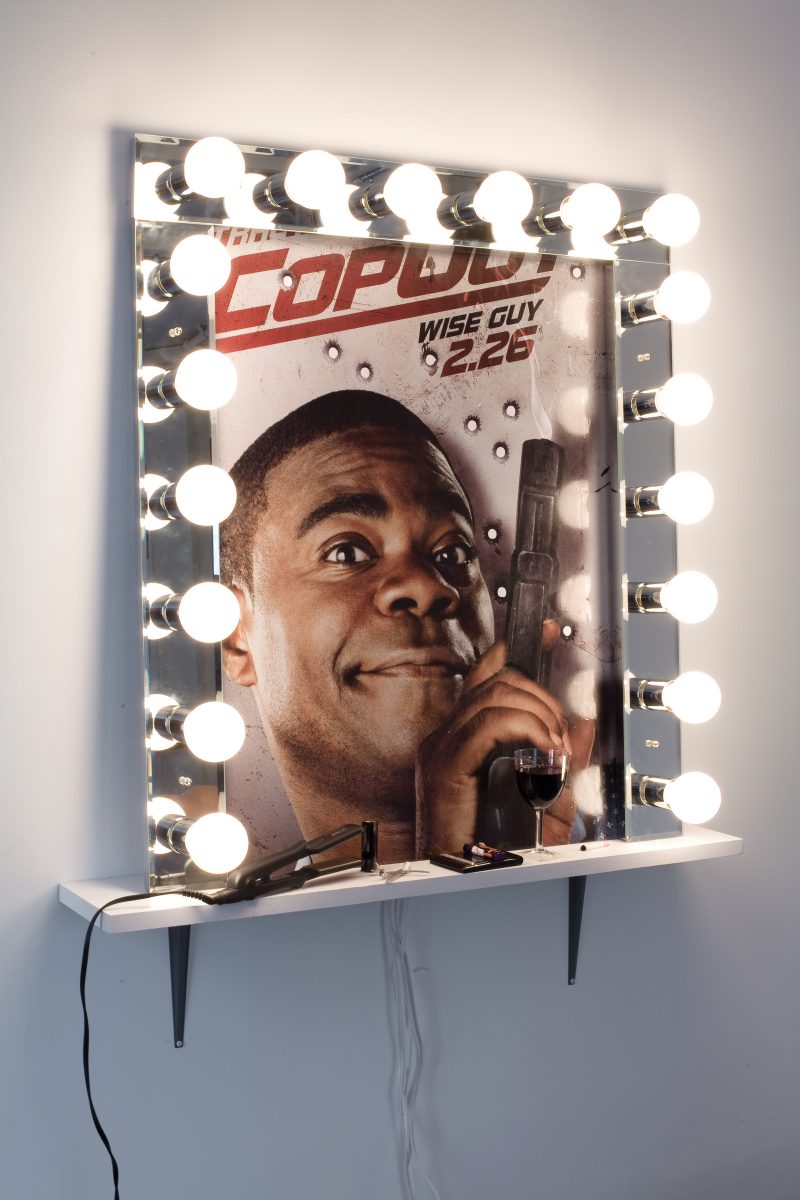Lizzi Bougatsos is a pervasive figure in New York culture. As a musician, she is a member of Gang Gang Dance and I.U.D., two groundbreaking musical groups in which she passionately drums and sings with a primal, wailing sort of joy. Like her bandmate, Brian DeGraw, she is also an artist exhibiting at James Fuentes gallery, in lower Manhattan. She’s known for her idiosyncratic approach to appropriation, and her use of found materials—advertisements, mostly—to construct absurd collisions of commercial images. The works seem, on the surface, like subversive jokes, but they never point to any kind of direct interpretation or commentary, which is what keeps them open-ended and potent and able to undermine a viewer’s daily, rote consumption of visual culture.
—Ross Simonini
GOOD HAIR

THE BELIEVER: Do you think of your visual art as connected to your music?
LIZZI BOUGATSOS: I do, I do now more than ever. I think it was a personal struggle for me for a long time because I was putting so much energy into Gang Gang Dance, and managing them, and doing all the busywork that it took me away from my art making, so I could never love them as one thing. But gradually, I’m starting to think of them in the same way. It’s just about me opening my mind more. I think I had a lot of resentment toward the band for a while, because I never got to make any art. Everything took so much time—the rehearsing and the writing and just the whole thing.
BLVR: It’s a long, slow process, making music with a band.
LB: Yeah, and then also your band members have to be really open to you making art.
BLVR: Do you usually have a studio?
LB: [Shaking her head] Mm-mm.
BLVR: Do you make art all the time or, if you’re more of a project-based artist, when the opportunity comes up?
LB: I don’t make art when I’m on tour; I’m just too tired.
BLVR: Does the art come out of the same well as the music?
LB: No, my music comes from a deep inside place. It’s not about… It’s more within, like, inner—yeah.
BLVR: Your art seems to be more about culture and found material. For instance, the gyro poster you bought from a Greek restaurant—
LB: A gyro truck.
BLVR: How much do they sell them for?
LB: I got that one for twenty, but it takes a lot of nerve to, like, build up all this energy to go up to somebody and ask to buy a poster they have on their truck. Like, I’m pretty shy about it. I usually walk by three or four times a month to see...
You have reached your article limit
Sign up for a digital subscription and continue reading all new issues, plus our entire archives, for just $1.50/month.
Already a subscriber? Sign in




